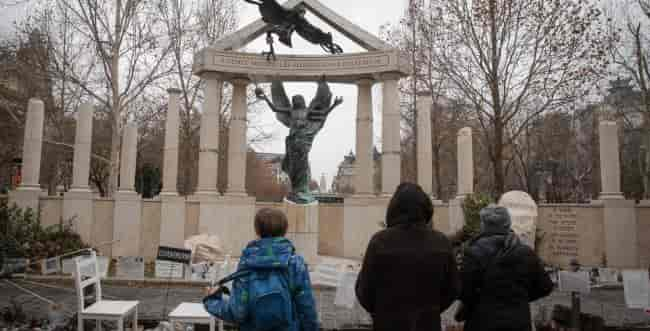Remembering Moshe Kraus
The man who saved tens of thousands of Jews
Today, 37 years ago, Moshe Kraus, who headed a rescue enterprise in Hungary that saved between 40,000 and 60,000 Jews during the Holocaust in what was called the Glass House, died

"At the time, when we began the rescue of Jews in Budapest, all the active Zionists had already left the city, and I remained there alone from all the leadership. There was no one by my side who would participate with me in the initiative to save Jews. Therefore, I must speak in my name alone."
This is how Moshe Kraus wrote about the rescue operation that he led, during the darkest days of the Jewish people. The rescue operation, with the help of good people from the gentile nations who refused to turn a blind eye to the destruction, saved tens of thousands of Jews from the abyss, without succumbing to the "benefit" of the oppressors. Who is Moshe Miklós Kraus?

From 1,500 aliyah approvals to 7,800
Moshe was born in a small village in northern Hungary. In his youth, he studied in a yeshiva in Miskolc under Rabbi Shmuel Halevi Austerlitz, one of the few Zionist rabbis in Hungary. Kraus was ordained as a rabbi and founded a Zionist youth group. At the age of 24, he established the first "Mizrachi" training group in Hungary. At 26, he moved to Budapest and began working in the office of "Ha'eretz-Yisraeli" that was responsible for aliyah on behalf of the Jewish Agency. In a short time, Moshe was appointed to head the office, and thus began the great rescue operation.
Even before the Holocaust broke out and while the clouds of war were gathering over Europe, Kraus managed to obtain approvals for the migration of many Jews who were expelled from Austria through Hungary to the land of Israel.
To Kraus's operation, the Swiss consul Karl Lutz, a Righteous Among the Nations, joined forces. When the Germans entered Hungary, Lutz provided Kraus with a Swiss diplomatic passport, granting him freedom of movement. He handed over the Swiss consular building, saying, "You can run the Jewish Agency from here."
With Lutz's assistance, Kraus secured protection for forty thousand Jews under Switzerland, a neutral country. Alongside them, 1,500 aliyah certificates were received, and Kraus and Lutz transformed individual certificates into family certificates, increasing the quota to 7,800 Jews.
Anyone who entered was saved
Kraus received a forty-page report by Vrba and Wetzler, the only two Jews who escaped from Auschwitz, in which he reported on the realization of the final solution for Hungarian Jewry. Kraus summarized the report, added his own, sent the report to Switzerland, and the West finally began to wake up.
The rumor that there was hope in the Swiss Embassy spread its wings, and crowds gathered at the doors of the embassy. Kraus transferred his operations to the Glass House, a large building that belonged to Arthur Weiss, one of the prominent glass manufacturers in Hungary. Anyone who entered the Glass House was saved. The house served as a kind of diplomatic refuge. The number of Jews saved by Kraus and Lutz ranged from 40,000 to 60,000. Kraus provided assistance to every person without distinguishing between Jews.
After the war, Kraus immigrated to Israel and lived in Jerusalem until the day of his death without children on the 28th of Av, 5746 (September 2,1986). Only in recent years has recognition of the man and his immense contribution to the rescue of tens of thousands of Jews from the Holocaust begun to emerge. Tell his story, spread his legacy, and may these actions elevate his soul.
Join our newsletter to receive updates on new articles and exclusive content.
We respect your privacy and will never share your information.
Stay Connected With Us
Follow our social channels for breaking news, exclusive content, and real-time updates.
WhatsApp Updates
Join our news group
Follow on X (Twitter)
@JFeedIsraelNews
Follow on Instagram
@jfeednews
Never miss a story - follow us on your preferred platform!